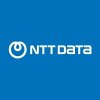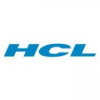
i
TCS
Filter interviews by
TCS SAP Technical Lead Interview Questions and Answers
TCS SAP Technical Lead Interview Experiences
1 interview found
I applied via Referral and was interviewed in May 2024. There were 2 interview rounds.
(2 Questions)
- Q1. What is the use of deep entity in Odata
- Ans.
Deep entities in OData are used to represent complex data structures with nested properties.
Deep entities allow for modeling complex relationships between entities in OData services
They are used to represent hierarchical data structures with nested properties
Deep entities can be used to model parent-child relationships, such as a customer with multiple orders
- Q2. What are the types of search help
- Ans.
Types of search help include elementary search help, collective search help, and collective search help with dynamic result rows.
Elementary search help is used for a single field input
Collective search help is used for multiple field inputs
Collective search help with dynamic result rows allows for dynamic addition of search result rows
(2 Questions)
- Q1. What was my role in current project
- Q2. Recent challenge faced and how it was mitigated
- Ans.
Migrating legacy SAP system to S/4HANA
Identified key challenges in data migration process
Developed a detailed migration plan with timelines and milestones
Collaborated with cross-functional teams to ensure smooth transition
Implemented testing procedures to validate data accuracy post-migration
Interview Preparation Tips
Skills evaluated in this interview
Interview questions from similar companies

(2 Questions)
- Q1. Basic ABAP questions
- Q2. Odata and CDS
(2 Questions)
- Q1. Client round- smartform and related questions
- Q2. AMDP questions
Interview Preparation Tips

I applied via Campus Placement and was interviewed in Sep 2024. There were 2 interview rounds.
(2 Questions)
- Q1. Workex related questions
- Q2. Case related to clients
(1 Question)
- Q1. Workex pointers from previous company
- Ans.
Workex pointers from previous company
Highlight key projects you worked on
Discuss your role and responsibilities in those projects
Mention any challenges faced and how you overcame them
Talk about any innovative solutions you implemented
Share any positive feedback or recognition received

(2 Questions)
- Q1. What are ABAP REPORTS
- Q2. What are idocs

(3 Questions)
- Q1. Explain the technical part and Implementation project and Enchancements and abap core and tcode?
- Ans.
Technical aspects of SAP ABAP development including implementation projects, enhancements, ABAP core, and transaction codes.
Implementation projects involve customizing SAP systems to meet specific business requirements.
Enhancements are modifications made to standard SAP programs to add new functionality.
ABAP core refers to the basic programming language used in SAP development.
Transaction codes are shortcuts to access ...
- Q2. What is the workflow and real time secanrio based question on abap?
- Q3. Transapent and views and pool models ?
(2 Questions)
- Q1. Basics of abap tables and alv model?
- Q2. Abap reports and program on employee? and tc codes on function modules and oops concepts also.
Interview Preparation Tips
Skills evaluated in this interview

Senior SAP Abap Consultant Interview Questions & Answers
LTIMindtreeposted on 28 Nov 2024
I applied via Naukri.com and was interviewed in Oct 2024. There was 1 interview round.
(2 Questions)
- Q1. What is flow of MM?
- Ans.
The flow of MM in SAP involves procurement, inventory management, and invoice verification.
Procurement process involves creating purchase requisitions, purchase orders, and goods receipt.
Inventory management includes goods issue, goods transfer, and physical inventory.
Invoice verification involves verifying vendor invoices and making payments.
Integration with other modules like SD and FI for seamless business processes
- Q2. How can u add new field in standard table apart from append structure
- Ans.
You can add a new field in a standard table by using the enhancement framework provided by SAP.
Use the enhancement framework to add custom fields to standard tables
Create a custom include structure and add it to the standard table using the enhancement framework
Implement the necessary logic to populate and use the new field in your ABAP code
Skills evaluated in this interview

(2 Questions)
- Q1. What is reports
- Ans.
Reports in SAP ABAP are used to display data in a structured format based on user requirements.
Reports are used to extract data from the database and display it in a structured format.
They can be interactive or non-interactive.
Reports can be created using ABAP List Viewer (ALV) or classical reports.
They can include selection screens for user input.
Examples of reports include sales reports, inventory reports, and financ
- Q2. What Is data dictionary
- Ans.
Data dictionary is a centralized repository of data definitions used in a database management system.
It stores metadata about the data, such as data types, field lengths, and relationships between tables.
It helps in maintaining data integrity and consistency across the database.
Developers can use data dictionary to create and modify database objects like tables, views, and indexes.
It simplifies data management tasks an...
Interview Preparation Tips

(1 Question)
- Q1. What is idocs and bapi
- Ans.
IDocs are data containers used for exchanging data between SAP systems, while BAPIs are standardized interfaces for accessing SAP functions.
IDocs (Intermediate Documents) are used for exchanging data between SAP systems or between SAP and non-SAP systems.
IDocs contain data in a structured format and are used for communication in a distributed environment.
BAPIs (Business Application Programming Interfaces) are standardi...
Skills evaluated in this interview

(2 Questions)
- Q1. Abap hana concept
- Q2. While migration from ecc to hana what steps to be carried out
- Ans.
Steps for migration from ECC to HANA include data migration, code adaptation, testing, and training.
Perform system assessment to identify customizations and modifications
Convert ABAP code to be compatible with HANA database
Migrate data using tools like SAP LT Replication Server
Perform thorough testing to ensure data integrity and performance
Provide training to users on new HANA features and functionalities
Interview Preparation Tips
Cons didn't get selected
Skills evaluated in this interview

I was interviewed in Dec 2024.
(1 Question)
- Q1. Can we use commit in user exit
TCS Interview FAQs
Tell us how to improve this page.
TCS Interviews By Designations
- TCS System Engineer Interview Questions
- TCS Software Developer Interview Questions
- TCS Software Engineer Interview Questions
- TCS Assistant System Engineer Interview Questions
- TCS Assistant System Engineer Trainee Interview Questions
- TCS IT Analyst Interview Questions
- TCS Ninja Interview Questions
- TCS Java Developer Interview Questions
- Show more
Interview Questions for Popular Designations
- SAP Abap Consultant Interview Questions
- SAP Abap Technical Consultant Interview Questions
- SAP Abap Developer Interview Questions
- Salesforce Consultant Interview Questions
- Technical Lead Interview Questions
- SAP Abap Associate Consultant Interview Questions
- SAP Fico Consultant Interview Questions
- SAP MM Consultant Interview Questions
- Show more
TCS SAP Technical Lead Interview Process
based on 1 interview
Interview experience
Interview Questions from Similar Companies
Fast track your campus placements
|
System Engineer
1.1L
salaries
| ₹1 L/yr - ₹9 L/yr |
|
IT Analyst
67.1k
salaries
| ₹5.1 L/yr - ₹16 L/yr |
|
AST Consultant
51.3k
salaries
| ₹8 L/yr - ₹25 L/yr |
|
Assistant System Engineer
29.8k
salaries
| ₹2.2 L/yr - ₹5.6 L/yr |
|
Associate Consultant
29.1k
salaries
| ₹9 L/yr - ₹32 L/yr |

Amazon

Wipro

Infosys

Accenture
- Home >
- Interviews >
- TCS Interview Questions >
- TCS SAP Technical Lead Interview Questions












